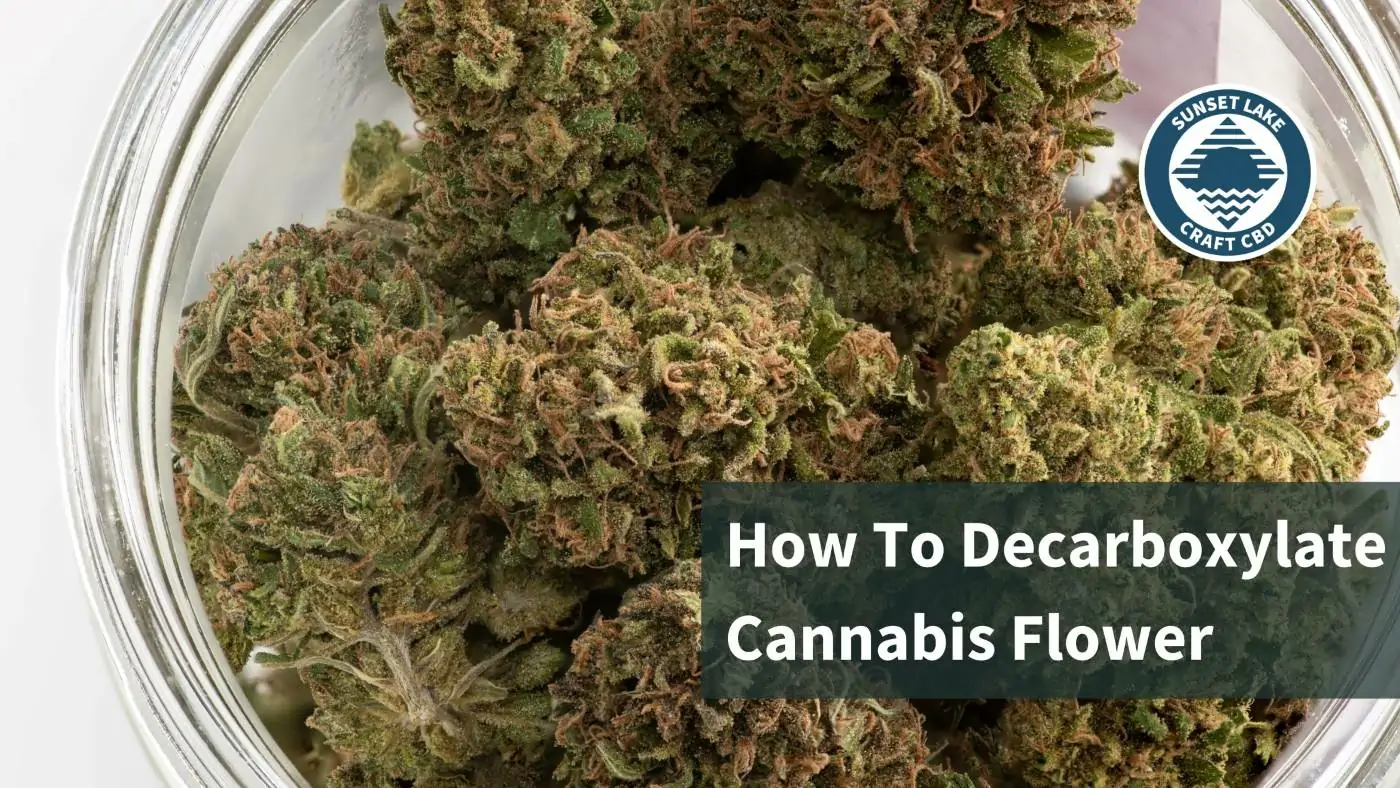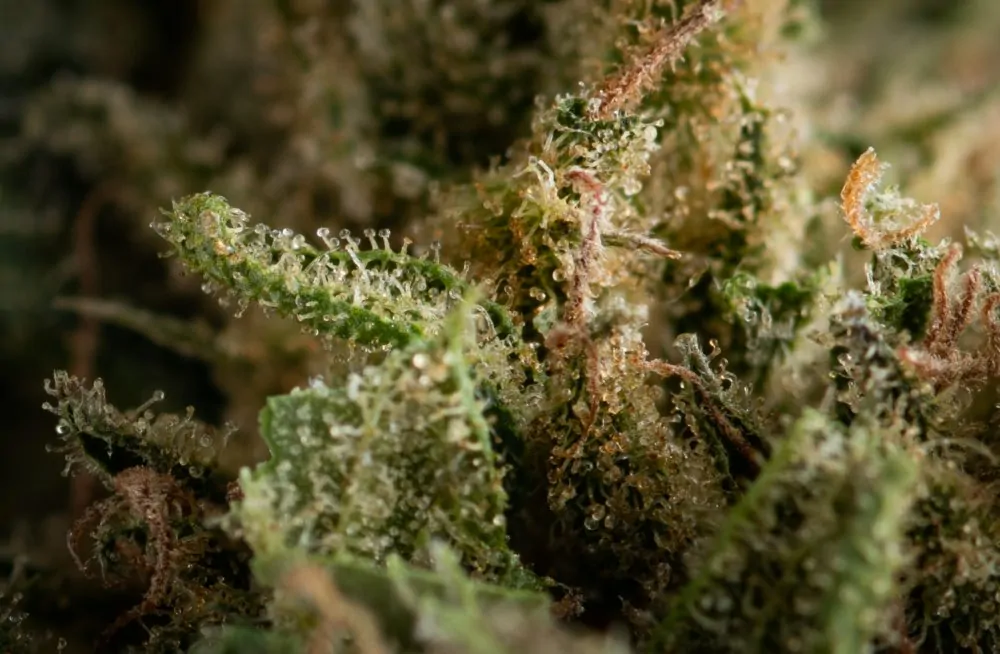No products in the cart.
How To Decarboxylate Cannabis: A Step-by-Step Guide

Decarboxylation is the process that activates acidic cannabinoids like cannabidiolic acid (CBDa) and tetrahydrocannabinolic acid (THCa) into their more common forms, CBD and THC, respectively. It’s essential to know how to decarboxylate cannabis if you want to make your own edibles. This guide will walk you through the step-by-step process of decarboxylating cannabis flowers. Understanding this process will enhance your ability to create potent cannabis-infused products at home, from edibles to topicals.
What You’ll Need to Decarboxylate Cannabis Flower
To properly decarboxylate your cannabis flowers, you’ll need to gather a few essential items. Each of these tools and materials plays a crucial role in ensuring that the decarboxylation process is effective and efficient.
Cannabis Flowers
“Cannabis flowers” includes stems, trim, and small buds that you’ve collected. The most crucial part of the flower is the trichomes, where all the cannabinoids are located. These tiny, crystal-like structures are rich in the compounds you aim to activate through decarboxylation.
Oven
You’ll need access to a full-sized or countertop toaster oven, as decarboxylation requires a low and slow process. Avoid using a microwave for this, as it does not provide consistent heating and can lead to uneven results. A reliable oven allows for precise temperature control, which is vital for preserving the potency of your cannabinoids.
Cannabis Grinder (Optional)
While a cannabis grinder is not necessary, it makes evenly decarboxylating your cannabis much easier. Grinding increases the surface area of your cannabis, allowing for more uniform exposure to heat and thus more consistent decarboxylation. This step can be particularly helpful if you plan to use your decarboxylated cannabis in finely divided forms, such as oils or tinctures.
Kitchen Tools
- Metal baking sheet or roasting pan: A sturdy baking sheet or roasting pan is essential for spreading your cannabis evenly.
- Aluminum foil or parchment paper: These materials prevent sticking and make clean-up easier.
- Cutting board or other clean work surface: Having a clean area to prepare your cannabis ensures that you maintain hygiene and organization during the process.

How to Decarboxylate Cannabis Flower
Now that you’ve gathered all your tools, it’s time to decarboxylate your cannabis flower. Follow these detailed steps to ensure optimal results.
Step 1: Preheat the Oven
Set your oven to “Bake” at 220°F (104°C). Using higher temperatures can boil away the cannabinoids, affecting the potency of your final product. Consistent low heat is key to converting THCa and CBDa into their active forms without losing valuable terpenes and cannabinoids.
Optional Step 2: Prepare Cannabis Flower
Grind your cannabis flower to increase the surface area and allow for a more even decarboxylation. Skip this step if you’re decarboxylating just stems or trim. However, if you opt to grind, aim for a coarse consistency to avoid burning the material.
Step 3: Prepare Your Baking Tray
Line your baking sheet or roasting pan with parchment paper or aluminum foil for easier clean-up. This step also helps in evenly distributing heat and preventing your cannabis from sticking to the pan. After step 4, you can cover your roasting pan with aluminum foil to reduce the cannabis smell and protect the terpenes.
Step 4: Spread Your Cannabis Evenly
Spread the cannabis evenly on the lined pan, ensuring not to crowd the buds. Leave spaces between unground buds for more uniform heating. This step is crucial for achieving consistent decarboxylation across all your cannabis material.
Step 5: Bake in the Oven
Place your baking sheet in the upper half of your preheated oven for 50 to 60 minutes. Older cannabis flowers may require less time. Monitor the process to ensure the cannabis doesn’t overheat, which can lead to the degradation of cannabinoids and terpenes.
You’ll know the decarboxylation is complete when your cannabis flower turns from green to amber brown. This color change indicates that the cannabinoids have been activated.
Step 6: Cool Down
Let the decarboxylated cannabis cool completely. Packing it away while still warm can introduce moisture, which may lead to mold growth. Cooling also stabilizes the cannabinoids, making them ready for storage or immediate use.
Step 7: Storage
If not using immediately, store your decarboxylated cannabis in an airtight container, like a glass Mason jar, in a cool, dark place. Proper storage helps preserve the potency and freshness of your cannabis, protecting it from light, air, and moisture.
How to Decarboxylate Cannabis for Different Effects
Once you’re comfortable with the basic decarboxylation process, you can experiment with different techniques to preserve terpenes and achieve various effects. Adjusting temperature and timing can influence the cannabinoid profile and the final product’s effects.
- Cover your cannabis flower with foil during decarboxylation: This method can help trap terpenes, which contribute to the flavor and therapeutic properties of cannabis.
- Lower decarboxylation temperatures and adjust timing: Experiment with temperatures around 200°F (93°C) and extend the baking time. This can help preserve more volatile compounds.
- Decarboxylate without using heat: Although this method can take several years, it preserves all terpenes and cannabinoids. This slow, natural decarboxylation occurs through the curing and aging process.
Different cannabinoid and terpene ratios will affect your experience, so experiment until you find a recipe you like. Understanding the interaction between various compounds can help you tailor your cannabis products to your specific needs.
Terpene Boiling Points
Terpenes are aromatic compounds found in cannabis that contribute to its flavor and effects. Knowing their boiling points can help you optimize the decarboxylation process to retain these beneficial compounds.
| Terpene | Boiling Point (°F) | Boiling Point (°C) |
| Linalool | 388.4 | 198.00 |
| Limonene | 348.8 | 176.00 |
| Myrcene | 332.6 | 167.00 |
| Humulene | 224.6 | 107.00 |
| Caryophyllene | 266.00 | 130.00 |
| Pinene | 311.00 | 155.00 |
| Ocimene | 345.2 | 174.00 |
| Bisabolol | 307.4 | 153.00 |
You’re Ready to Infuse
With your decarboxylated cannabis flower, you’re ready to infuse it into various lipids. Lipid infusion allows cannabinoids to bind with fats, making them bioavailable for consumption. This process is the basis for making cannabis-infused oils, butters, and other edibles.
For more information on making edibles and how lipid infusion works, check out our other blogs:
- [What Is Edible THC? 5 Tips On How To Safely Enjoy Edibles]
- [The Dos & Don’ts of Making CBD Edibles]
- [How To Make Your Own CBD Oil In 6 Easy Steps]
- [Hemp Edibles: Your Quick and Fun Guide To Baking With CBD]
FAQs
1. What is decarboxylation, and why is it important?
Decarboxylation is the process of heating cannabis to activate its cannabinoids, such as turning THCa into THC and CBDa into CBD. This activation is crucial for making edibles and achieving the desired psychoactive effects. Without decarboxylation, the cannabinoids remain in their acidic form, which is not as effective.
2. Can I decarboxylate cannabis in a microwave?
No, decarboxylation requires a low and slow process that is best achieved using an oven. Microwaves do not provide consistent heating and can lead to uneven decarboxylation and loss of cannabinoids. Using a microwave can also risk burning the cannabis, resulting in a loss of potency and undesirable flavors.
3. How can I reduce the smell of cannabis while decarboxylating?
Covering your baking tray with aluminum foil during decarboxylation can help reduce the smell. Additionally, using an oven with good ventilation or decarboxylating in a well-ventilated area can help manage the aroma. You can also try using an air purifier or cooking other fragrant foods simultaneously to mask the cannabis smell.
4. How should I store decarboxylated cannabis?
Store decarboxylated cannabis in an airtight container, like a glass Mason jar, and keep it in a cool, dark place. Proper storage helps preserve the potency and freshness of your cannabis. Avoid exposure to light, air, and moisture to maintain its quality over time.
5. Can I decarboxylate cannabis without using heat?
Yes, you can decarboxylate cannabis without heat, but this method can take several years. Heat is the most efficient way to decarboxylate cannabis quickly and effectively. Slow, natural decarboxylation can occur through long-term storage, but it’s impractical for immediate use.
